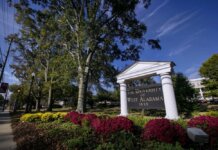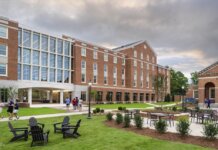
The Great Recession of late 2007 to June 2009 was a harbinger for U.S. colleges and universities. Enrollment declines were going to happen now, the present day, went the predictions.
Alabama’s higher education institutions have taken significant steps to thwart this dire forecast. Using unique recruitment approaches, tapping into workforce needs and adding new campus amenities, the state’s universities have increased enrollment numbers.
Samford University, Birmingham
Samford just marked its 17th consecutive year of enrollment growth, according to Samford President Beck Taylor. “For private higher education, [that] is almost unheard of to have a streak that long,” he says. Enrollment has risen by nearly 36% since 2009, according to a September post on Samford’s website.
In its strategic plan, the school has budgeted for about a 3% enrollment rise year over year, Taylor explains. To support that increase and prepare for the “enrollment cliff,” Samford has targeted its recruitment efforts on Atlanta, Nashville, central Florida and Texas, especially Dallas.
“These are areas where we’ve focused our attention with a lot of success. And those are also areas that are predicted to not see as big a decline in college-going populations,” Taylor says.
Overall, the South is expected to be somewhat shielded from that decline, while the Northeast and Midwest are predicted to be “hard hit,” Taylor notes.
Out-of-state first-year students make up about 75% of Samford’s 2025 enrollment, says Taylor, and 44 states are currently represented.
Per Samford’s website, the university’s more than 92% freshmen-to-sophomore retention rate far exceeds the national 68% retention average, according to National Student Clearinghouse data. Samford’s strong student retention rates are somewhat tied to a “relational educational approach” that faculty and staff have with students, Taylor explains.
He also gives kudos to Samford’s admissions team for listening closely to students’ demands. To that end, the university has spent more than $300 million on campus amenities the past two years, Taylor says. These include student housing, a new rec center and new dining areas. “All of these are amenities that meet current student demand but also really set us up well for students of the future.”
Beyond its targeted recruitment and new amenities, Taylor says that the most important factor in Samford’s current and future success is keeping true to its identity and mission.
“Clearly articulating that mission in a way that resonates with students and families is really important to us,” Taylor says. “Central to that is our commitment to a Christ-centered higher educational experience, and that Christian mission remains authentic, hasn’t softened in any way.”
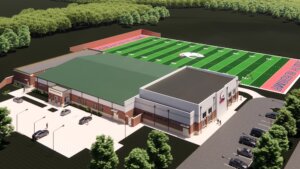
University of South Alabama, Mobile
Athletic team buses began “morphing” into recruitment buses at South, as it’s known, in 2022. When the buses aren’t ferrying athletic teams to events, they transport high-school students to South’s campus during Jag Days, explains Andi Kent, executive vice president and provost at South. These recruitment events started as part of a larger plan to grow the undergraduate population.
For Jag Days, Kent and a member of the enrollment services team take the bus in the mornings to high schools within about a 90-mile radius of the university. The students load up for a day trip to the campus. They get a taste of the school’s academic programs, from health care to business and engineering, Kent says.
“We really believe it’s made a big difference. A lot of the students that we bring have never stepped foot on a college campus before. It opens their eyes as to what may be possible for them,” she notes.
Jag Days, additional recruiting efforts in- and out-of-state, and hiring a new associate vice president of enrollment services were all strategies to boost declining undergraduate enrollment, Kent says. In 2016, South reached a high of about 16,500 students. From then until 2022, the school saw a gradual decline to roughly 13,500 undergrads, she notes.
“We knew that we had to do something, we knew about the cliff. Of course, COVID didn’t help things. But even a few years before COVID, we were going in the wrong direction,” Kent says.
Today, it appears that the school’s recruiting efforts have paid off. According to a Sept. 5 post on South’s website, a total of 14,285 students enrolled for fall, a jump from 14,003 the prior year. An uptick in undergraduate enrollment helped boost the total, with 2,137 new first-year students.
South also is working to serve different populations and beef up programs and amenities, Kent notes, including:
- New office of military services: Started last fall, the office will work to attract active military and their families, along with other military-
affiliated prospects. - Growing graduate programs: A new doctorate program in environmental sciences started last year, and a new nurse anesthetist program is under development.
- New Jaguar marching band practice facility: Opening in January, the space will enable South to grow the current 280-member band to 350 students.
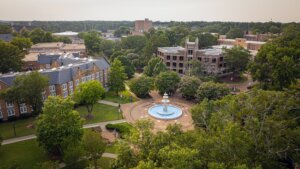
University of North Alabama, Florence
“I think the state of Alabama will see its initial decline in graduating [high school] seniors in 2026 [enrolling in college],” says Julie Taylor on the predicted university enrollment decline. UNA, says the assistant vice president for enrollment management, has been preparing for the slide like other Alabama universities.
One step in UNA’s strategy has been to diversify its student population over the past five years. “Our initial traditional freshman class is still very important to us,” Taylor explains. “But we’ve also looked at different populations of students that we needed to focus on.” That includes graduate students, transfer students and dual enrollment or early college students, she says.
Taylor has emphasized to UNA staff that it’s also important to be responsive to all students’ communication needs or wants (i.e., messages) and their preferred channels. “We’ve really tried to be agile and quick. We know that this day and age of students, they’re the Amazon generation, and they want to hear from us quickly,” she notes.
Decreasing paperwork and other barriers to students’ access to college also has been a goal.
UNA’s agile focus also has brought new programs the past five years and currently, some of which grew out of COVID and some out of regional workforce needs, Taylor explains. Those include respiratory care, occupational therapy assistant (launching in spring 2026) and a Doctor of Nursing Practice. Accreditation for the full occupational therapy program is underway, says Michelle
Eubanks, UNA spokesperson.
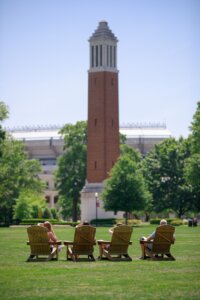
University of Alabama, Tuscaloosa
UA set another enrollment record this year, welcoming 42,360 students for fall 2025, a 3.7% increase and a more than 4% increase of in-state students, according to a UA spokesperson. Students represented all 50 states and 99 countries.
Nursing student enrollment is up 15%, and the College of Community Health Sciences saw a 10.8% increase, according to a post on UA’s website. The post also reported that UA enrollment in the graduate school was more than 6,200, another new record.
University of Alabama at Birmingham
UAB recorded its largest freshman class in history this fall, with more than 2,500 freshmen estimated this semester, says a UAB spokesperson. UAB’s largest freshman class before this year was 2,415 in 2021.
“We are encouraged by the early data showing a strong increase in freshman enrollment,” says UAB President Ray L. Watts. “This growth reflects the excellence of our faculty and the transformative opportunities our students have inside and outside of the classroom, as well as our Success Initiative led by Provost Janet Woodruff-Borden and Vice President for Student Affairs John Jones.
“By aligning our academic, advising and student support services from initial interest through graduation, the initiative is creating a more seamless and empowering experience for our students. It’s a testament to UAB’s commitment to student success,” Watts says.
Among new programs offered is a bachelor’s degree in eSports performance management and coaching, a first for the state, according to a July post on UAB’s website. ESports is where traditional sports meet video gaming. The program will teach students how to create training programs, among other things.

University of Alabama in Huntsville
UAH has consistently maintained strong enrollment in recent years. For fall 2025, UAH welcomed 1,220 new freshmen, the second consecutive year of growth in first-year enrollment, says a UAH spokesperson.
UAH also continues to attract master’s and doctoral students, particularly in high-demand fields such as engineering, business and the sciences. Earlier this year, the university launched Charger EDGE (Educational Discount for Graduate Excellence), a new program offering a 25% tuition discount for master’s degrees and graduate certificates. This initiative has contributed to sustained growth in graduate enrollment, the spokesperson says.
Nancy Randall is a Tuscaloosa-based freelance contributor to Business Alabama.
This article appears in the November 2025 issue of Business Alabama.


